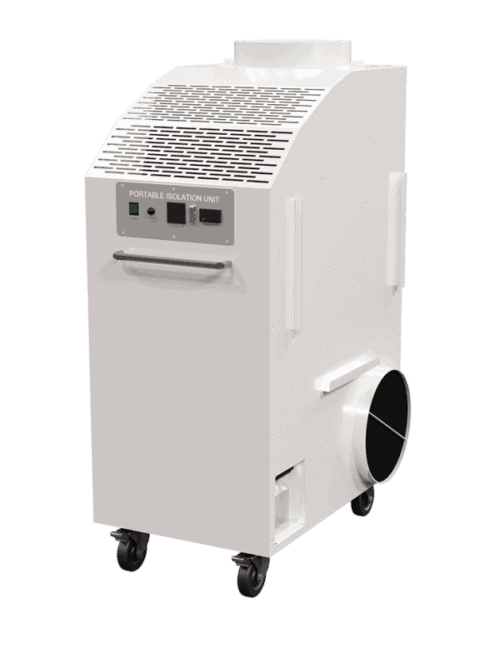Introduction
Riverside-San Bernardino County Indian Health (RSBCIHI) has been providing comprehensive healthcare to the local Native American population since 1968. The organization comprises seven clinics in two of the largest counties in the United States and is devoted to abiding by the customs of their Indian communities. The mission of RSBCIHI is to promote wellness through early intervention and holistic care.
When COVID-19 descended upon the U.S. in early 2020, the administration scrambled to find a way to safely and efficiently test the local population. RSBCIHI researched options before identifying Air Innovations IsolationAir® Systems as the best way to manage the complex process of controlling the spread of the coronavirus while caring for patients.
The Challenge
RSBCIHI knew they could not bring sick people into the facilities for fear of spreading the virus and jeopardizing the safety of their staff and other patients. Their primary challenge was figuring out how to test and treat the community, so they erected tents outdoors at each of their facilities strictly for COVID purposes. The tents were problematic from the get-go. First, it was impossible to secure proper ventilation in the tents because they were enclosed on all sides and it felt precarious to see patients inside them.
The environment was also problematic. Located in Southern California, the facilities are surrounded by the high and low deserts and nearby mountains which produce extreme heat, cold, and high winds. The volatile climate made providing medical care outdoors nearly impossible.
Lastly, RSBCIHI cares for a population of 18,000, which means a high volume of people were being passed through these unstable tents. Moreover, many of the Native Americans living in the area were vulnerable to the virus due to underlying conditions and other circumstances. At the peak of the virus, they were experiencing a 26-28% positivity rate. During these historically unprecedented times, the large population needed reliable and safe medical care more than ever before.
In the end, the experiment was too cumbersome for both staff and patients to cope with and the team at RSBCIHI sought an alternative. They explored negative pressure rooms used in hospitals to contain infectious diseases, but those solutions cost upwards of $100,000 per room to construct. With seven clinics to consider, that solution was out of reach. A nursing supervisor became aware of portable units that create isolation rooms and their interest was piqued.
The Solution
In the end, RSBCIHI purchased eight Air Innovations IsolationAir®Systems to maintain a sterile room inside each clinic (and one for its eighth facility opening soon). The portable units come with HEPA filtration and UV sterilization. Systems were configured to turn their standard-sized patient rooms into negative pressure environments. The sterile exam rooms were placed near the back of each facility in order to provide a dedicated entrance that is used only by potentially contagious patients and medical personnel.
Creating a Clean Environment
Since COVID-19 is an airborne infection, RSBCIHI needed negative pressure rooms. The air pressure in negative pressure rooms is lower than the pressure outside the space, which prevents aerosols or contaminated particles from leaving the room naturally. With an IsolationAir® infectious disease control unit running in the space, room air is recirculated through the system, filtered, sterilized, and returned to the room environment, creating a safer space for everyone in the room and beyond. Since the air must pass through both HEPA and UVC filtration, it is also safe to return air to a facility’s HVAC.
In addition to creating a clean environment, the IsolationAir units provide strict temperature and humidity control—for patient comfort—since the rooms are cut off from the facility’s climate control system.
What was also appealing to RSBCIHI staff was the ease of use. Once the IsolationAir® Systems were set up and tested, the units simply need to be turned on 30 minutes before the first patient and left on an entire day until 30 minutes after the last appointment. This enables each clinic to care for between 10-16 people per day, with 30-minute breaks between patients. The machine is plugged into an emergency outlet in the event of a power outage and can be operated by anyone.
IsolationAir meets CDC, AIA, and ASHRAE guidelines.
The Results
Seven IsolationAir units achieved the following at each RSBCIHI facility (with one planned for use in a new clinic):
- Enabled an indoor space dedicated to COVID testing
- Transformed a standard-size patient room into a negative pressure room
- Streamlined testing and triage
- Provided stable climate control for patient comfort
- No disruption to patient care during potential power outages
- Invested in the post-pandemic future to create either positive or negative pressure rooms

